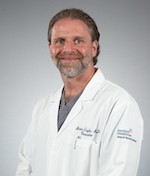<< Back
Why We Get Varicose Veins and How to Treat Them
![]()
August 24, 2021
By Dr. Brian Coyle
Vascular Surgeon
Heart & Vascular Institute
MidState Medical Center
Over the last couple of months, many of us have been wearing shorts and bathing suits – no doubt paying attention to our bodies and how we look. Some may be self-conscious of their legs – particularly if they have varicose veins that are noticeable or causing pain and discomfort.
 Dr. Brian Coyle
Dr. Brian Coyle
More than 50 percent of those affected by varicose veins are women. It can impact men as well and are usually seen in people between the ages of 30 to 70, but it’s not uncommon to see younger patients as well.
As a vascular surgeon, I often have people ask what causes varicose veins. To put it simply, the veins in the lower half of our body have a tough job because they have to pump blood from the legs and feet to the heart, working against gravity. In some individuals, the valves in these veins are not working properly and the blood flows backwards or refluxes. At that point, people can then experience leg pain, cramping, heaviness, swelling, and sometimes itching. In addition to this, some will also notice swollen clusters of blood vessels on the surface of the skin that are purple or blue in color.
Your age, weight and family history all play a role in the development of varicose veins. For some people, when left untreated, the issue is made worse by skin discoloration, break down, and ulceration. These ulcerations or wounds take longer to heal due to the venous insufficiency.
Given all of this information, you’re probably wondering how to treat the problem. It’s important to understand that every patient is different and will require a different level of care. We first assess the symptoms and do an ultrasound to look at the problem vein. Some of the initial treatments we use to help alleviate symptoms are compression stockings, elevating the legs, and a short course of an anti-inflammatory medication. There are even instances where we will encourage weight loss to help reduce pressure on the legs.
If initial conservative treatment options are not getting the patient results, we can turn to surgery. One of the most common procedures that we do is a radiofrequency ablation. We basically burn the problematic vein shut, which takes about 20 minutes in the doctor’s office with minimal down time.
With any treatment method, we outline realistic expectations for every patient based on their condition. Our goal is to improve quality of life by reducing the patient’s symptoms and the appearance of varicose veins. If anyone is self-conscious of their veins or experiencing pain and discomfort, they really should see a specialist to help in the treatment of this condition.
Dr. Brian Coyle is a vascular surgeon with the Heart & Vascular Institute at MidState Medical Center. For more information or to make an appointment, click here.